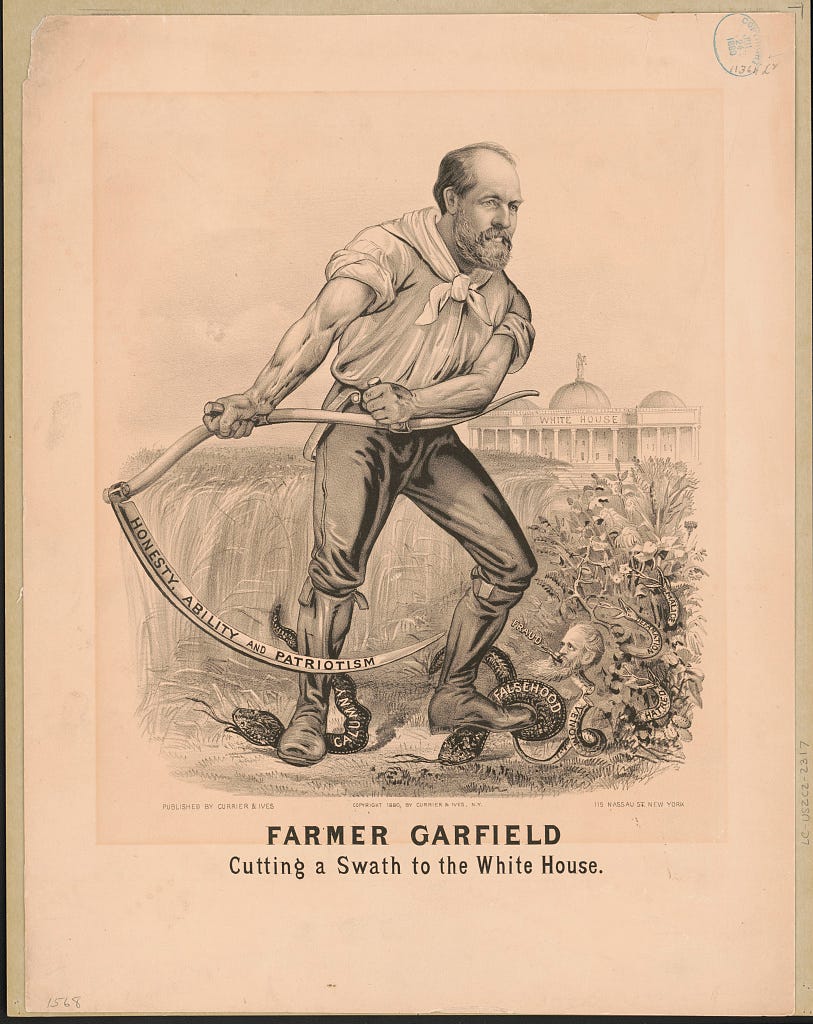What Corruption Looks Like
Gilded Age cartoons take on machine politics
I didn’t really have a mental picture of what President James Garfield looked like, but I didn’t expect him to be jacked.
When this cartoon was produced by Currier and Ives in 1880, Garfield was almost 50. In real life, he looked like this; I suppose it’s hard to tell what kind of guns he had hidden under those sleeves.
Keep reading with a 7-day free trial
Subscribe to Looking Through the Past to keep reading this post and get 7 days of free access to the full post archives.


